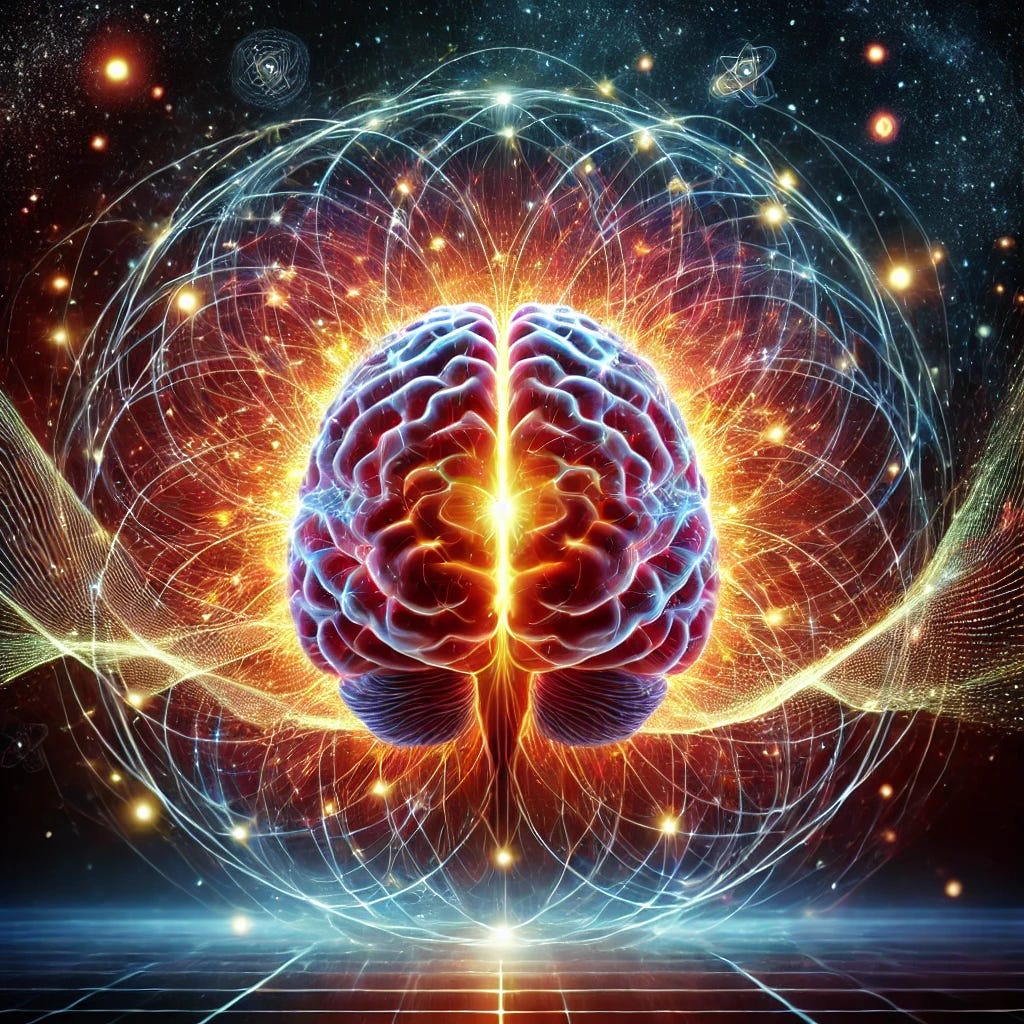Consciousness in Electric Currents: The Brain’s EM Fields and the Theory of Magnetivity
The exploration of consciousness has long fascinated scientists, philosophers, and thinkers.
A recent article, “A Controversial Theory Says Consciousness Might Secretly Live in Your Brain's Electric Currents,” dives into an emerging hypothesis: that consciousness arises not solely from synaptic neuronal activity but from the brain's electromagnetic (EM) fields. This theory, while still debated, is supported by intriguing findings that challenge traditional neuroscience. When correlated with the theory of magnetivity—a concept focusing on electromagnetic fields at the quantum level—this hypothesis becomes even more compelling, offering a potential unifying framework for understanding the interplay of physics and consciousness.
The EM Field Theory of Consciousness
Core Hypothesis: The EM field theory proposes that consciousness is not a mere byproduct of neuronal activity but is actively shaped and unified by the brain’s electromagnetic fields. These fields, generated by the firing of neurons, may coordinate disparate neural processes to create the cohesive experience of consciousness.
Ephaptic Coupling: A key mechanism in this theory is ephaptic coupling—how neurons influence each other through electric fields without direct synaptic connections. This phenomenon allows for rapid communication and synchronization, possibly explaining cognitive processes that synaptic activity alone cannot account for.
Supporting Evidence: A 2019 study from Case Western Reserve University found that severed sections of a mouse’s hippocampus still exhibited coordinated activity, which researchers attributed to electric field coupling. This finding challenges the long-standing assumption that direct synaptic connections are the sole means of neural communication.
Advancing the Scientific Conversation
The EM field theory of consciousness is reshaping how researchers view the brain's functionality. Traditionally, the brain has been studied as a network of synaptic pathways, where neurons relay information like electrical wires. However, this new theory suggests a more holistic perspective, where the brain’s electric fields act as an integrative medium, aligning and synchronizing neural activity to produce conscious experience.
Despite its promise, the EM field theory faces skepticism. Critics argue that while electromagnetic fields are undeniably present, their role in consciousness remains unproven. Bridging this gap will require further studies that explore the precise interaction between EM fields and cognitive processes.
The Correlation with Magnetivity
Magnetivity, a concept rooted in quantum physics, explores the behavior and influence of electromagnetic fields at the quantum level. When applied to the brain’s EM fields, several compelling correlations emerge:
Quantum Coherence:
Magnetivity emphasizes how electromagnetic fields organize and align systems at a quantum scale. Similarly, the brain’s EM fields may leverage quantum coherence to synchronize neural activity, fostering unified conscious experience.
Information Encoding:
Magnetivity suggests that electromagnetic fields can carry and organize information efficiently. This aligns with the idea that the brain’s EM fields could encode and transmit data across neural networks, enhancing rapid cognitive processing.
Field Propagation:
At the quantum level, magnetivity explains how electromagnetic fields propagate energy and influence surrounding particles. In the brain, similar mechanisms might allow EM fields to extend their influence beyond localized neural activity, integrating distant regions of the brain.
Entanglement-Like Phenomena:
Magnetivity’s exploration of quantum entanglement raises the possibility that the brain’s EM fields could exhibit entanglement-like behavior, enabling instantaneous coordination across neural circuits.
Bringing It Together: Magnetivity and Consciousness
The convergence of the EM field theory of consciousness and the principles of magnetivity offers a groundbreaking perspective. If magnetivity governs the behavior of electromagnetic fields at the quantum level, it may provide a foundational framework for understanding how the brain’s EM fields interact with neural processes. This synergy could explain phenomena like the speed of thought, the unification of sensory experiences, and even the subjective nature of consciousness itself.
Furthermore, this correlation challenges the traditional boundary between physics and neuroscience, suggesting that consciousness might arise from principles deeply rooted in the quantum properties of electromagnetic fields.
Implications for the Future
Interdisciplinary Research: Bridging neuroscience and quantum physics could lead to new insights into the fundamental nature of consciousness.
Technological Innovations: Understanding the brain’s EM fields through the lens of magnetivity might inspire advancements in brain-computer interfaces, AI, and EM field therapies.
Philosophical Questions: This correlation prompts deeper inquiries into the nature of consciousness, free will, and the relationship between mind and matter.
Conclusion
The EM field theory of consciousness offers a bold reimagining of how the brain generates awareness, challenging traditional models and inviting collaboration across disciplines. When viewed through the lens of magnetivity, this theory gains an additional layer of depth, highlighting the potential quantum underpinnings of conscious experience. As science continues to explore this intersection, we may inch closer to understanding one of humanity’s greatest mysteries: how we become aware of ourselves and the world around us.


